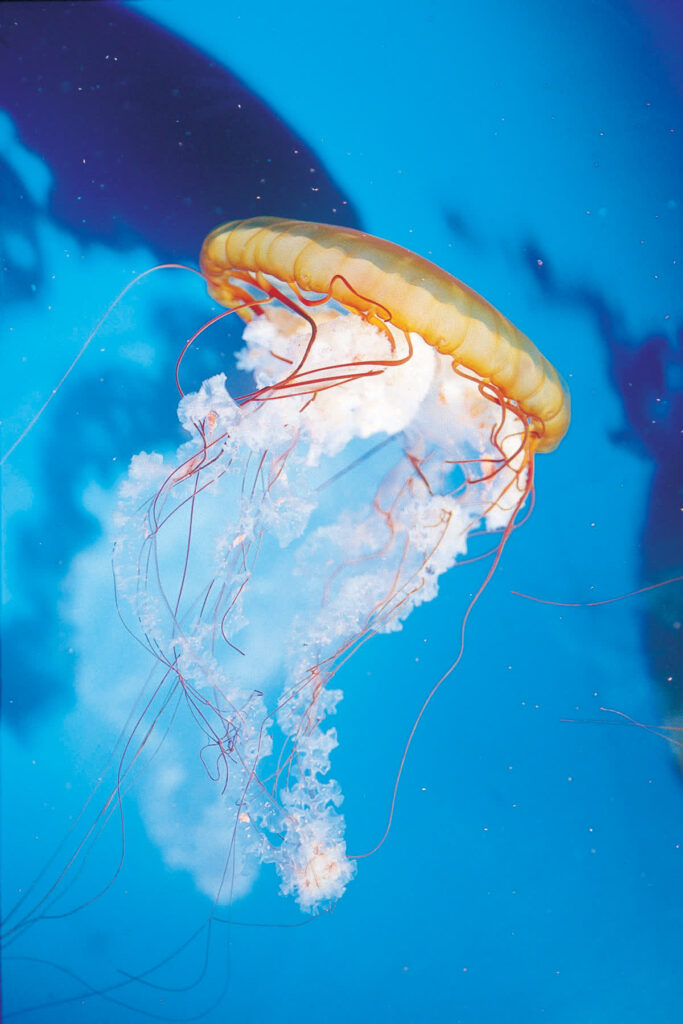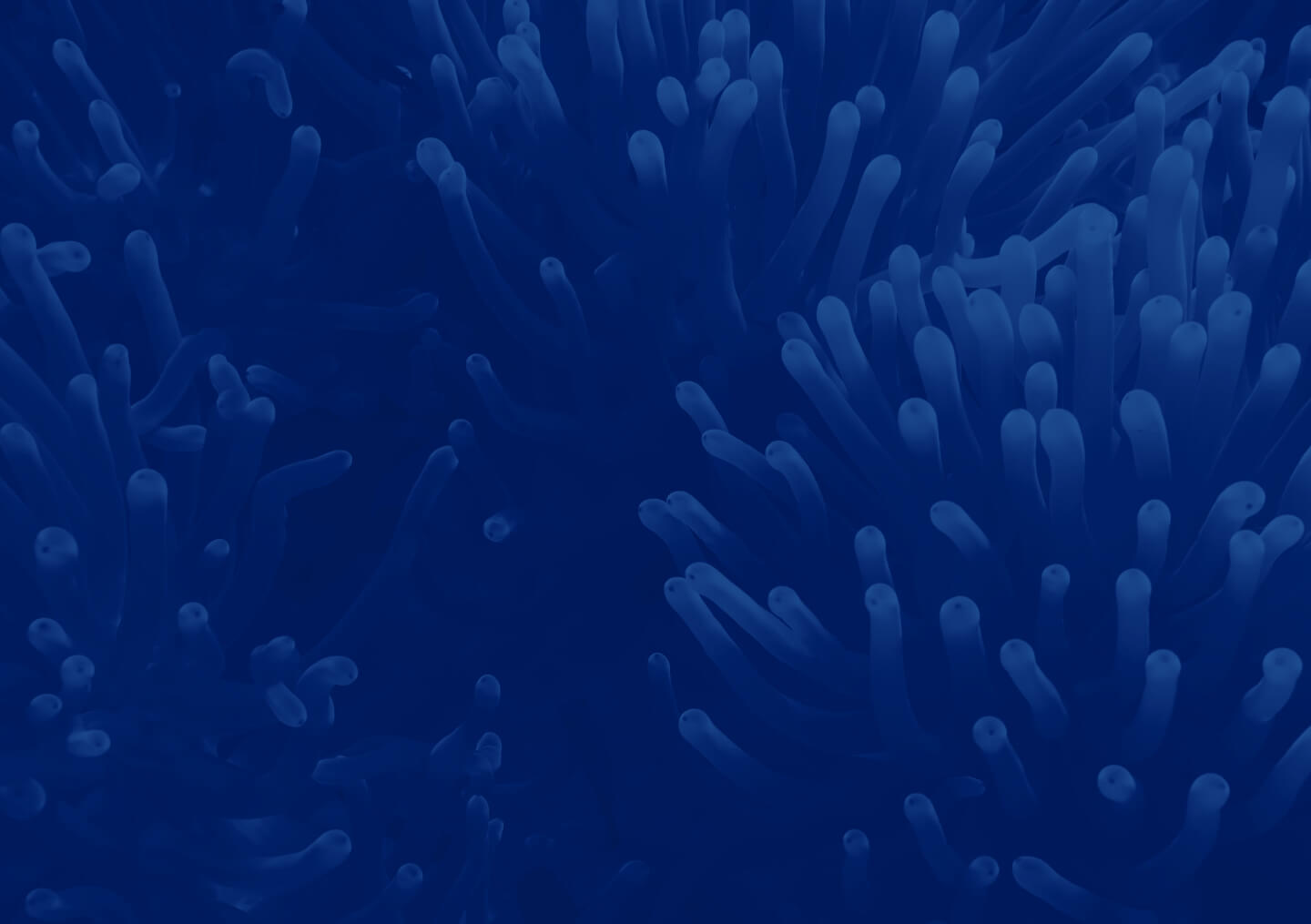Species Type:
Invertebrates
Common Name(s):
Atlantic sea nettle
Size:
Nettles that live closer to shore in estuary or bay environments tend to be smaller, growing to be 2 inches (5 centimeters) long, while nettles that live in the open ocean grow to 7 inches (19 centimeters).
Diet:
Both sea and bay nettles feast on smaller jellies and fish, copepods, minnows, mosquito larvae and zooplankton.
Range & Habitat:
Nettles are found in large quantities in the Chesapeake Bay but also live in the Gulf of Mexico, Caribbean Sea, and the Atlantic Ocean. Their ability to adjust to varying levels of salinity allows them to live in environments closer to shore as well as in the open ocean.
Details:
Closely related, bay and sea nettles differ in a few minuscule ways. Bay nettles are half the size of the sea nettles and typically have around 24 tentacles, opposed to the sea nettle’s 40. Both species have the ability to survive in low salinity environments and fend off predators with their painful sting. Often, they have symbiotic relationships with various species of crabs. The crabs will ride atop of or live in the bell of the nettle cleaning out any debris or parasites.


